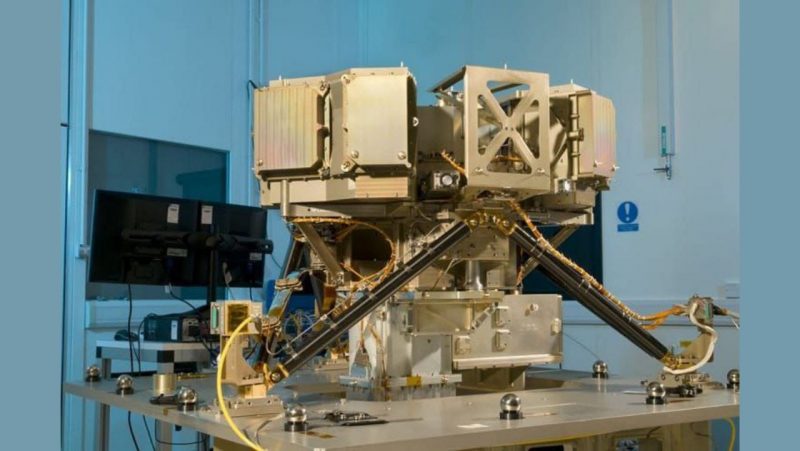The James Webb Space Telescope (JWST) is a space telescope designed primarily to conduct infrared astronomy. The world’s most powerful telescope ever, was launched on December 25, 2021. It is deployed in a solar orbit near the Sun–Earth L2 Lagrange point, about 1.5 million kilometres (930,000 mi) from the Earth.
JWST is equipped with four scientific instruments sensitive over a wide range of wavelength from the optical to the mid-infrared region i.e. (0.6 – 28.3 microns).
Webb’s unprecedented scientific power is a function of both the size of its primary mirror and the extreme sensitivity and precision of its four scientific instruments:
Each of these instruments will be described in great details one by one in different articles.
This section provides clarity on the Mid-infrared instrument (MIRI), the function of each of its components, different modes, and the types of observations they are designed for.
Mid-Infrared Instrument (MIRI)
The Mid-Infrared Instrument (MIRI) is a camera and spectrograph that detects light in the mid-infrared area of the electromagnetic spectrum, which has wavelengths that are longer than those seen by our eyes.
The wavelength range of MIRI is 5 to 28 microns. Its sophisticated detectors will allow it to detect the redshifted light of distant galaxies, freshly developing stars, faintly visible comets, and Kuiper Belt objects. MIRI’s camera will provide wide-field, broadband imaging, allowing it to continue the magnificent astrophotography that has made Hubble so famous.
The spectrograph will allow for medium-resolution spectroscopy, which will provide new physical characteristics about the faraway objects it will study.
MIRI Technical Details
Three Arsenic-doped Silicon (Si:As) detector arrays are used in the MIRI. In comparison to the imager, the camera module delivers wide-field broadband imaging, while the spectrograph module provides medium-resolution spectroscopy over a limited field of view. The MIRI’s nominal operating temperature is 7K.
The Thermal Management Subsystem’s passive cooling is insufficient to achieve this amount of cooling. Webb has a unique “cryocooler” specialised in keeping MIRI’s detectors cool. Instead, a two-step procedure is used: The instrument is cooled to 18K using a Pulse Tube precooler, and 7K using a Joule-Thomson Loop heat exchanger.
